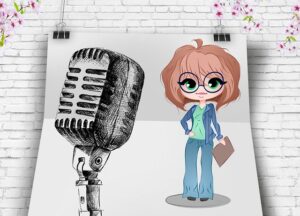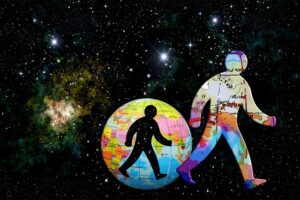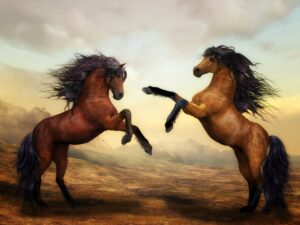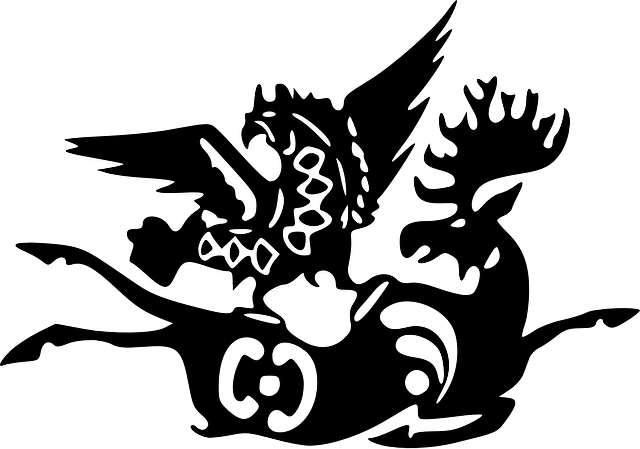Conflict is an inherent part of literature. It provides the tension and excitement that keeps readers engaged. There are many different types of conflict, and each can provide its challenges for writers.
This blog will discuss the most common types of conflict, explore how conflict can be used to create a more compelling story, and give examples from some famous works of literature.
Here are the most common types of conflict:
Man vs. Nature
In this conflict, the protagonist must face the elements of nature (weather, terrain, animals) and their limitations to survive. For example, in the classic novel The Old Man and the Sea by Ernest Hemingway, the protagonist Santiago struggles against nature (such as his battle with a giant marlin) and his limitations and fatigue.
How to create a more compelling story about Man vs. Nature:
One way to create a more compelling story is to explore how the conflict between man and nature can affect the characters in your story. For example, you could have a character face a major conflict, like having to abandon their home due to a natural disaster or struggling to survive in a hostile environment. You could also explore the psychological effects of constantly fearing natural disasters or dangerous animals.
There are a few ways to use the conflict of man vs. nature in a story. One way is to have the character in direct competition with nature, such as a character who is lost in the wilderness and must fight for survival against the elements.
Another way is to have the character conflict with the environment, such as a character who lives in a desert and must struggle against the harsh conditions of his habitat.
And finally, you could also have the character’s inner nature conflict with his outer nature, such as a gentle person who must find ways to survive in a violent world.
Man vs. Self

A great way to use conflict between a person and themselves is to create an internally conflicted character. This usually involves a moral or spiritual dilemma and forces the character to make difficult choices and battle their conscience and emotions. An example can be seen in Harper Lee’s To Kill a Mockingbird with Atticus Finch’s internal conflict over whether or not to defend a black man accused of raping a white woman.
How to create a more compelling story about Man vs. Self:
There are many examples of characters with internal struggles in thrillers. A good example is when the protagonist tries to trust their intuition or go with what they think is right. Their intuition may tell them that something is wrong, but their rational mind may tell them that they’re being paranoid and that everything is okay.
This type of conflict can add tension and suspense to a story as the reader tries to figure out what the protagonist will do. For example, if your character’s conflict is to fight against their natural tendencies, it can make for an exciting story. Or if your character is trying to overcome a personal flaw, that can be very interesting. Another example is when the protagonist struggles with their dark side and tries to overcome their evil urges.
Internal struggles in thrillers are so common because they create a lot of tension and suspense. It’s always exciting to watch someone struggle with their inner demons and see how they ultimately overcome them.
Man vs. Society

This conflict occurs when an individual or group of people conflict with their society, culture, or laws. Such conflict can lead to meaningful and thought-provoking conversations about how individuals fit into power structures. An example of this conflict is in George Orwell’s novel 1984, which tells how one man fights against oppressive government rule.
How to create a more compelling story about Man vs. Society:
There are many different ways to examine the conflict between man and society. One way to think about it is that the individual represents the forces of change, while society represents the forces of tradition. This can lead to very compelling stories in which the individual must fight against all odds to bring about change.
Another way to look at it is that man represents freedom, and society represents authority. In this case, the story is often about someone who rebels against authority to gain freedom. This can be a compelling story because it speaks to universal human desires for freedom and independence.
No matter how you view it, a conflict between man and society makes for a compelling story that touches on human emotions and experiences.
Man vs. Man
This conflict occurs when two characters are pitted against one another in a struggle for power or glory. It can create conflict and tension as characters battle it physically, emotionally, or intellectually. Many classic works of literature include this conflict, such as William Shakespeare’s play Romeo and Juliet, which features a conflict between the two lovers’ families.
How to create a more compelling story about Man vs. Man:
In real life, you often see a conflict between people as unfavorable. But in a story, it can be used to create drama and engage the reader’s emotions. The key is ensuring that the readers understand why the characters are fighting and what they stand to gain or lose by winning or losing the battle. You’ll have them hooked until the end if you can do that.
One way to use conflict man vs. man is to have two characters with opposing viewpoints or goals. This creates a clash that can lead to drama and excitement. For example, if one character wants to save the world while the other wants to destroy it, you’ve got a good story!
Man vs. Technology

In this conflict, humans interact with technology and machines to gain control over them or their consequences. An example of this conflict is seen in the novel The Hitchhiker’s Guide to the Galaxy by Douglas Adams, where Arthur Dent tries to save the Earth from destruction by an alien race.
How to create a more compelling story about Man vs. Technology:
The conflict between man and technology can create a more compelling story by highlighting the tension between human ingenuity and machines’ cold, calculating power.
On the one hand, man can create incredible technological advances, using his intelligence and creativity to overcome challenges. Yet, on the other hand, these same technologies can often outstrip or overwhelm man’s abilities, leading to a sense of helplessness in the face of overwhelming power.
This conflict can make for an interesting and exciting story that explores man’s and machine’s strengths and weaknesses.
Nature vs. Nature
Nature is another conflict that writers often include in their works. This conflict can be seen as between opposing forces, such as light and dark or fire and ice. An example of this is seen in J.R.R. Tolkien’s The Lord of The Rings, where Frodo Baggins must face insurmountable natural challenges on his journey to destroy the ring.
In the case of nature vs. nature, you have two powerful elements at odds with each other. This can explore different themes, such as the conflict between order and chaos, freedom and restraint, and technology and nature.
It can also explore human emotions and relationships, such as love versus hate, mercy versus justice, or sacrifice versus greed.
For example, in a story about two warring nations, each side might be seen as representing a different aspect of nature. On one side might be the ruthless, aggressive force that sees bloodshed and domination as the ultimate goal. On the other side might be the faction driven by a desire to protect its people and land, even if it means going to war.
By exploring the motivations of both sides and showing how they are constantly at odds with each other, a story can become more complex and engaging.
Animal vs. Animal

Animals struggle with one another in literature as well. These conflicts often portray themes of power, survival, and territory. An example of this conflict is seen in Rudyard Kipling’s The Jungle Book, where Mowgli must fight the fierce tiger Shere Khan to protect his home and friends.
One way to create a more compelling story is to have the conflict between two different animals rather than between humans and animals. For example, in the book The Hunger Games, the protagonist, Katniss, must compete in a televised fight to the death against other tributes from around the country.
This type of conflict creates tension and suspense that wouldn’t be as strong if humans were fighting each other. Additionally, it can be interesting to explore how animals interact with each other in a conflict situation.
No matter which type appears in literature, each is a tool for creating conflict and tension that can drive characters to take action and move the plot forward. Readers are given a glimpse into the conflict and its resolution, which helps them better understand the characters. Readers can learn more about themselves by studying conflict in literature.
Conclusion
In conclusion, a man in conflict is a popular and evergreen trope in literature because it allows readers to explore what it means to be human. It can be an internal or external struggle, but ultimately it comes down to understanding oneself and one’s place in the world. It can also provide a different perspective on conflicts between people and their natural surroundings.
I hope this article was helpful to you!
If you’re working on your first novel and are looking for more help with your writing, please check out my other writing articles at https://ullahakanson.com/blog/
Thanks for reading!
Ulla

